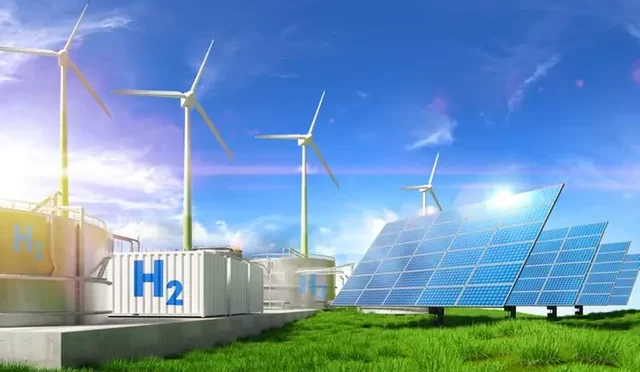According to the International Renewable Energy Agency’s (IRENA) World Energy Transitions Outlook 2023, the most realistic way to course correct the 1.5°C Pathway is by tripling renewable energy and the doubling of energy efficiency by 2030. Green hydrogen has an important role to play in helping reach of that target.
Over the last few years, green hydrogen has been championed as the fuel of the future, thanks to its reputation as a clean, storable and portable energy source. Its high energy density makes it ideal for fuelling energy intensive industrial processes that are difficult to electrify and hard to abate sectors such as aviation and shipping.
There is a pressing need to increase demand by moving from commitments and pledges to actual projects. However, progress in international cooperation to establish global targets for demand creation has been limited. This is where policy framework should come in.
In light of the upcoming report by IRENA, the United Nations Industrial Development Organization (UNIDO) and the German Institute of Development and Sustainability (IDOS), speakers at the COP28’s Global Renewables Hub discussed how policymakers can drive local value chain creation around green hydrogen production. Based on these insights, country-specific needs may subsequently be addressed through projects and cooperation.
In his opening, UNIDO Managing Director Gunther Beger, said, “Innovative solutions for de-risking investments are required to push the green hydrogen globally. Such solutions can path the way for hydrogen to help us reach net zero goals. I am very happy with this cooperation, resulting in an extensive and insightful report, which we hope can help accelerate the uptake of green hydrogen.”
IRENA Acting Director of Knowledge, Policy and Finance Centre, Ute Collier said, “Green hydrogen development has the potential to generate socio-economic benefits such as job creation, which we would like to see more in the developing world. We do hope our joint report can shed light on how policymakers can address the challenges faced by green hydrogen.”
Global South countries hold the keys for a sustainable green hydrogen production as they have the highest potential for producing it. By prioritising use over export and align green hydrogen production with Sustainable Development Goals, Global South countries can unleash the opportunities that this energy carrier can offer them, as pointed out by Rita Strohmaier from IDOS. After all, exploiting the benefits of green hydrogen accelerates the energy transition.
Scaling up green hydrogen production is not without consequences, however. Increased green hydrogen production equals increased water withdrawal and consumption. As global demand for hydrogen expands, the total freshwater withdrawal could more than triple by 2040 and increase sixfold by 2050.
Water shortages can put pressure on the energy sector, and are likely to continue to occur and become more frequent as extreme weather events intensify, especially in areas best suited to green hydrogen production. In regions where water is scarce – to reduce water use and potentially lower costs – the use of water-efficient cooling technologies like air cooling is recommended by another new report by IRENA.
Developed with Bluerisk and launched at COP28, Water for Hydrogen Production offers tailored recommendations to guide policymakers and industry towards more water-efficient practices. This includes conducting thorough water risk assessments and setting up stringent water use regulations, to ensure sustainable growth in the hydrogen industry while preserving scarce and shared water resources and minimising disruptions that could arise from climate risks or competition for water use.
Opening the launch session, IRENA Acting Director of Knowledge, Policy and Finance Centre, Ute Collier said, “Hydrogen is expected to play an important role in the energy transition that will allow us to achieve the 1.5°C climate target. This report aims to start a conversation between policymakers, industry leaders, and communities towards a more informed and sustainable production and use of hydrogen.”
The report’s in-depth analysis results in a set of specific recommendations. Chief among them is the call on governments to prioritise renewables-based hydrogen in the establishment of hydrogen market.
Concluding his presentation during the launch, Bluerisk Director, Tianyi Luo said, “Water withdrawal and consumption should be considered as performance indicators of green hydrogen. Our report recommends regulations and financial incentives to favour projects that demonstrate efficiency, prioritising sustainability of water and energy.”
The report Water for Hydrogen Production can be found here.
The report Green hydrogen for Sustainable Industrial Development: A Policy Toolkit for Developing Countries will be available in the coming days.


